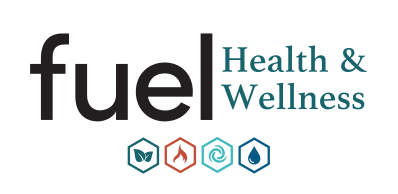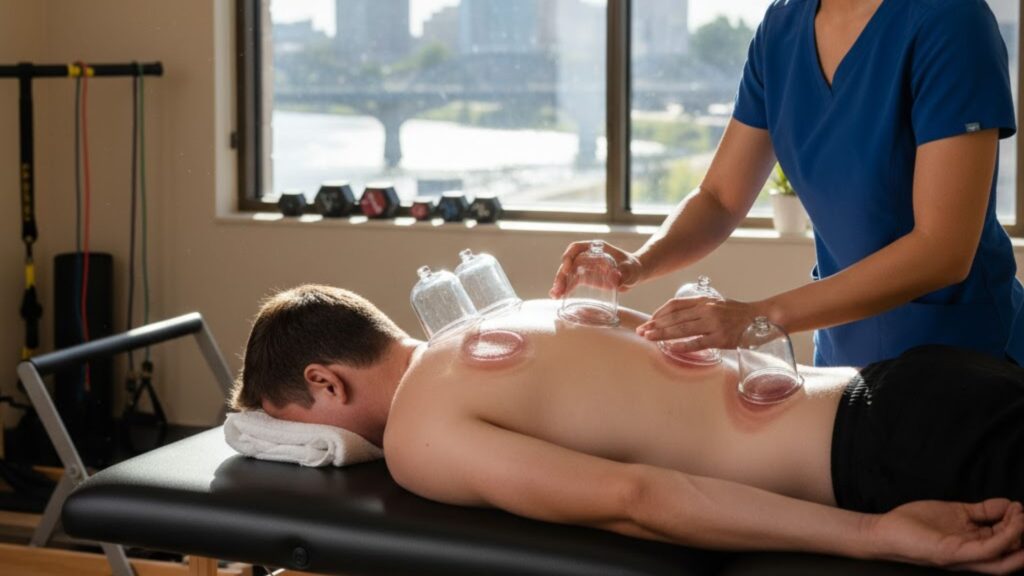Massage cupping therapy uses targeted suction applied to soft tissue to lift the skin and underlying fascia, producing fascial decompression and improved microcirculation that reduce muscle tension and enhance range of motion. This article explains the physiological mechanisms—suction-driven fascial release, increased blood flow, lymphatic stimulation, and neural modulation—and maps those mechanisms to practical outcomes like reduced knots, faster recovery, and measurable flexibility gains. Readers will learn how different cupping techniques (dry, gliding, static) are used, how cupping compares with deep tissue massage and assisted stretching, who benefits most, and what to expect during a session. Practical sections on preparation, sensations, aftercare, and contraindications provide actionable guidance, while local options in Grand Rapids and Grandville are noted for massage cupping therapy. Throughout, the focus is on evidence-informed mechanisms and integration with complementary modalities such as assisted stretching and physical therapy to help you choose the right approach for recovery and performance.
What Is Massage Cupping Therapy and How Does It Work?
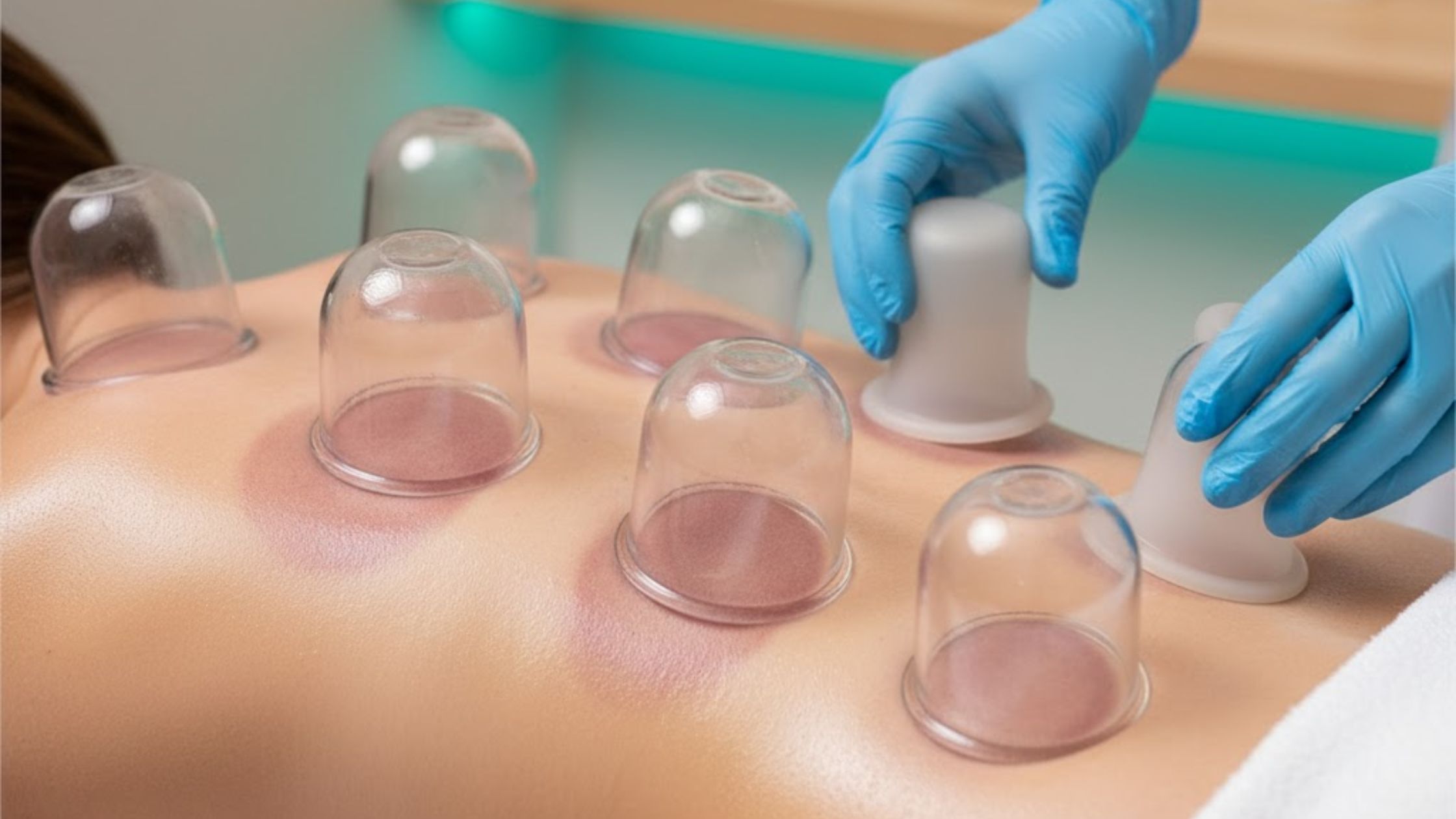
Massage cupping therapy is a manual therapy that applies negative pressure to soft tissues to create mechanical lift of skin and fascia, which in turn improves tissue glide, local circulation, and lymphatic flow. The primary mechanisms are suction-induced fascial decompression, hyperemia that increases oxygen and nutrient delivery, and lymphatic pumping that clears metabolic waste; these mechanisms combine to reduce local pain signals and improve tissue flexibility. Modern massage cupping differs from traditional fire cupping by emphasizing massage-style gliding, silicone cups, and integration with manual therapy techniques. Understanding these mechanisms clarifies why cupping is used for both acute recovery and chronic stiffness and sets up practical comparisons with other modalities in the following sections.
What is massage cupping therapy and its origins?
Massage cupping therapy traces roots to traditional cupping practices used in multiple ancient medical systems, while contemporary methods have been adapted for clinical and athletic applications. Historically, practitioners used heated glass cups to create suction; modern practice favors controlled suction via silicone or mechanical pumps and combines cups with massage strokes for gliding effects. This adaptation transforms a historical remedy into a reproducible clinical tool that fits within manual therapy and complementary care frameworks. Recent studies and clinical reviews frame massage cupping as an adjunct to rehabilitation, which leads into a closer look at the specific biomechanical effects produced by suction.
Research indicates that myofascial decompression, a form of cupping, is a technique used to treat soft tissue injuries and increase flexibility.
Myofascial Decompression (Cupping) for Flexibility and Soft Tissue Injuries
Myofascial decompression (MFD), or cupping, and self-myofascial release (SMR) are common techniques utilized to treat soft tissue injuries and increase flexibility. MFD is a negative pressure soft tissue treatment technique using suction to manipulate the skin and underlying soft tissues.
How does suction create fascial decompression and myofascial release?
Suction creates a mechanical lift that separates superficial and deep fascial layers, reducing adhesions that tether muscles and restrict glide; this process is known as fascial decompression. By increasing the space between tissue layers, suction restores fascial glide and improves the ability of muscle fibers to contract and lengthen without friction. This mechanical separation also reduces localized strain that contributes to trigger points and myofascial pain. Understanding fascial decompression explains why combining cupping with active movement or stretching often consolidates gains in mobility, a topic explored next.
How does massage cupping increase blood flow and stimulate lymphatic drainage?
Applying negative pressure over tissue increases local blood flow (hyperemia) by mechanically drawing capillaries into a fuller state and encouraging vasodilation; this boosts oxygen and nutrient delivery to fatigued or injured tissue. Simultaneously, rhythmic suction and release enhance lymphatic return, helping to clear metabolic byproducts, reduce swelling, and lower inflammation. These circulatory and lymphatic effects accelerate metabolic recovery and reduce nerve sensitivity, which decreases pain and facilitates subsequent mobility work. Recognizing these circulatory benefits prepares us to compare cupping to other modalities that also target circulation.
What types of cupping therapy are offered in Grand Rapids?

Practitioners in Grand Rapids commonly offer three massage-cupping approaches: dry cupping for static suction, gliding (massage) cupping that moves cups along tissues, and static targeted cupping for focal release. Dry cupping is often used for localized decompression, gliding cupping is preferred for integration with massage techniques to target broader fascial lines, and static targeted cups are chosen for stubborn adhesions or trigger points. The following table summarizes these techniques to help clinicians and patients choose the best option for specific needs and sensations.
| Technique | Procedure | Best for |
|---|---|---|
| Dry cupping | Cups applied statically with suction | Localized fascial decompression and short targeted release |
| Gliding (massage) cupping | Suctioned cups moved over lubricated skin | Broad fascial mobilization and integration with massage |
| Static targeted cupping | Small cups placed on trigger points | Focused adhesion release and persistent knots |
This comparison clarifies which technique maps to common clinical goals and helps guide treatment selection in subsequent sections.
How Does Massage Cupping Therapy Relieve Muscle Tension?

Massage cupping relieves muscle tension by mechanically releasing fascial adhesions, improving local circulation, and modulating pain signals—actions that decrease tightness, reduce pain, and restore functional muscle length. Suction targets restricted areas and trigger points, decreasing local compressive stress and enabling improved muscle glide; at the same time, increased blood flow and lymphatic clearance accelerate resolution of metabolic fatigue. Comparing cupping to compression-based approaches clarifies when cupping is the preferred first-line manual technique and when it works best in combination with other therapies.
How does cupping therapy target muscle knots and chronic tension?
Cupping targets muscle knots by creating a suction field that lifts tissue and reduces intramuscular pressure around trigger points, which disrupts the mechanical cycle that maintains a knot. The lift allows capillaries and lymphatics to perfuse the restricted area, delivering oxygen and removing waste that contributes to pain; this biological reset often produces immediate reduction in tightness. Clinically, a chronic trapezius knot that resists compressive strokes may respond to a short series of static cups followed by gliding cupping to re-establish fascial glide. This targeted effect is one reason athletes and desk-bound adults both find cupping useful for persistent local tension.
What role does inflammation reduction play in muscle tension relief?
Inflammation reduction is central to lasting tension relief because elevated fluid and inflammatory substances sensitize local nerves and stiffen tissue. Cupping promotes lymphatic drainage and increases microcirculation, both of which help remove inflammatory byproducts and lower cytokine concentrations that sustain pain and guarding. Reduced peripheral inflammation decreases protective muscle contraction, allowing tissues to lengthen and rehabilitative exercises to be more effective. Recognizing this role highlights why cupping is commonly used alongside movement-based therapies to convert short-term relief into long-term functional gains.
How does cupping compare to deep tissue massage for muscle pain relief?
Comparing modalities clarifies indications: cupping applies tensile lift forces to separate fascial planes, while deep tissue massage uses compressive strokes to lengthen and remodel muscle fibers; both reduce pain but via distinct mechanical pathways. Cupping is often preferable for adhesions and superficial fascial restrictions that benefit from decompressive lift, whereas deep tissue strokes are effective for dense, deeper myofascial tension requiring direct compressive remodeling. Many clinicians combine both—using cupping to release adhesions and deep tissue to follow-up with directed lengthening—producing complementary outcomes that enhance recovery and mobility.
The application of dry cupping and myofascial decompression is increasingly popular among manual and physical therapists for reducing musculoskeletal pain and improving mobility.
Efficacy of Myofascial Decompression and Dry Cupping for Musculoskeletal Pain and Mobility
The use of the complementary therapy, dry cupping and its modified technique, myofascial decompression are becoming an increasingly popular modality utilised by manual and physical therapists in western clinical practice, aimed at reducing musculoskeletal pain and improving mobility.
| Approach | Mechanism | Typical Outcome |
|---|---|---|
| Cupping | Suction → lift fascial layers | Rapid fascial glide restoration, improved local circulation |
| Deep Tissue Massage | Compressive strokes → fiber elongation | Structural remodeling of dense tension, reduced chronic tightness |
| Assisted Stretching | Controlled joint/muscle lengthening | Neuromuscular retraining and lasting ROM gains |
This table highlights how each approach contributes uniquely, and why an integrated plan often produces the best results.
Which muscle areas benefit most from cupping therapy in Grand Rapids?
Cupping is particularly effective on regionally superficial fascial systems such as the upper back and trapezius, posterior shoulder girdle, hamstrings, and calves where adhesions and restricted glide commonly impair function. For example, posterior shoulder cups can reduce stiffness that contributes to impingement-like symptoms, while hamstring cupping can improve extensibility for runners and athletes. Local practitioners tailor cup placement and technique to the anatomical fascial lines implicated in a given complaint, which maximizes functional outcomes and prepares tissue for assisted stretching or strengthening that follows.
How Does Massage Cupping Therapy Improve Flexibility and Mobility?
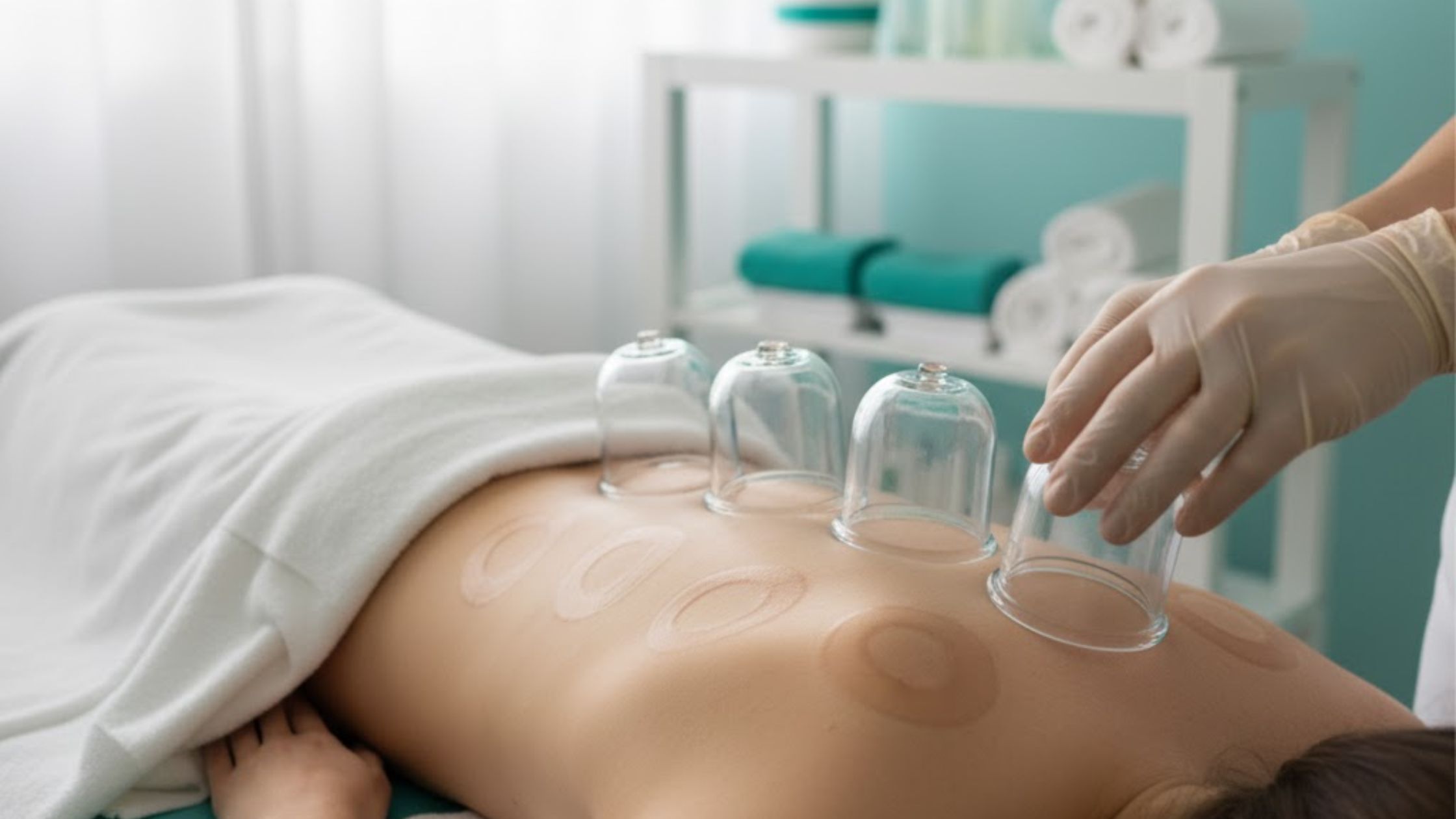
Massage cupping improves flexibility and mobility by increasing tissue compliance, restoring fascial glide, and priming muscles for neuromuscular retraining; these mechanical and circulatory changes translate into measurable gains in joint range of motion. When suction reduces adhesions and enhances circulation, muscles exhibit improved extensibility and reduced guarding, enabling better participation in stretching and movement-based rehabilitation. Pairing cupping with assisted stretching consolidates these gains by retraining motor patterns at the new length, which helps maintain improved range of motion over time.
How does fascial release through cupping enhance range of motion?
Fascial release via cupping increases the capacity of connective tissue to elongate and slide, which reduces passive resistance across joints and allows greater movement arcs. By separating adhered layers, suction restores normal kinematic relationships between muscles and surrounding fascia, permitting joints to move more freely without compensatory tension. Objective measures—such as improvements in sit-and-reach or shoulder flexion—are commonly observed after short cupping sessions combined with active movement, demonstrating that mechanical changes can produce rapid functional benefits.
What improvements in athletic performance result from cupping therapy?
Athletic benefits tied to cupping include faster recovery between sessions, reduced delayed-onset muscle soreness (DOMS), and improved functional mobility that supports performance metrics like stride length or throwing shoulder ROM. For endurance athletes, improved hamstring compliance can translate to a longer, more efficient stride, while for overhead athletes, improved scapular and shoulder mobility can enhance throwing mechanics. When integrated into a structured recovery plan, cupping can reduce time lost to soreness and support consistent training loads, contributing indirectly to performance gains.
Research suggests that cupping massage may be beneficial for treating delayed onset muscle soreness (DOMS) in healthy individuals.
Cupping Massage Effectiveness for Delayed Onset Muscle Soreness (DOMS)
Cupping massage and petrissage may be beneficial in the treatment of DOMS, however, there is limited research on the application and use of cupping massage on DOMS. This study examines the effectiveness of petrissage versus cupping massage on the pain associated with DOMS among a healthy population.
How does cupping therapy complement assisted stretching for flexibility?
Cupping prepares tissue by reducing mechanical restrictions, after which assisted stretching actively reinforces increased length and reprograms neuromuscular control at the new range. A practical protocol often sequences cupping first to lift adhesions, followed immediately by assisted stretching and active strengthening to consolidate mobility. Repeating this sequence across multiple sessions—tailored to the athlete’s training cycle—maximizes durable range-of-motion improvements while minimizing regression due to the body’s natural protective responses.
| Body Area | Typical Restriction | Expected Improvement / Session Recommendation |
|---|---|---|
| Upper back / trapezius | Postural tightness, trigger points | Reduced tension, improved cervical and thoracic ROM; 1–2 sessions/week initially |
| Hamstrings | Reduced extensibility, running tightness | Increased sit-and-reach by measurable cm; pair with active stretching post-cupping |
| Shoulders | Anterior glide deficits, impingement-related stiffness | Improved overhead reach and shoulder flexion with combined cupping + stretching |
This mapping helps clinicians prioritize treatment areas and schedule follow-ups according to functional goals.
Who Can Benefit from Massage Cupping Therapy in Grand Rapids?

Cupping benefits a broad audience: athletes seeking faster recovery and mobility, people with chronic muscle stiffness and pain who want non-pharmacologic relief, and wellness seekers using cupping for maintenance and stress-related tension. Cupping fits within an integrative care model where it complements physical therapy, assisted stretching, and other modalities to produce measurable functional improvements. Clear screening and individualized plans ensure safety and optimize outcomes across these populations.
How do athletes use cupping therapy for injury recovery and performance?
Athletes use cupping for post-training recovery, to reduce DOMS, and to address mobility limitations that impair performance. Targeted sessions before or after training can reduce localized stiffness and speed metabolic recovery, allowing athletes to sustain training intensity. When cupping is embedded into a broader rehab timeline with progressive loading and neuromuscular retraining, it supports faster return-to-play outcomes while minimizing risk of re-injury.
Can individuals with chronic muscle stiffness and pain benefit?
Individuals with chronic stiffness often see reductions in baseline tightness and improved function with a course of cupping sessions combined with home exercises and movement retraining. Chronic conditions typically require an initial phase of more frequent treatments followed by tapering maintenance visits; this individualized approach addresses both tissue-level restrictions and habits that contribute to persistent tension. Regular re-evaluation ensures that the treatment plan adapts to progress and changing needs.
Is massage cupping suitable for general wellness and holistic health seekers?
For wellness-focused clients, lower-intensity cupping sessions can serve as preventive maintenance to manage day-to-day tension, improve circulation, and support stress resilience. These sessions emphasize gentle gliding techniques and incorporate relaxation-based manual therapy elements. Integrating cupping into a holistic wellness routine—including movement, hydration, and sleep hygiene—helps sustain mobility and reduce episodic pain flare-ups.
What Should You Expect During and After a Massage Cupping Session?
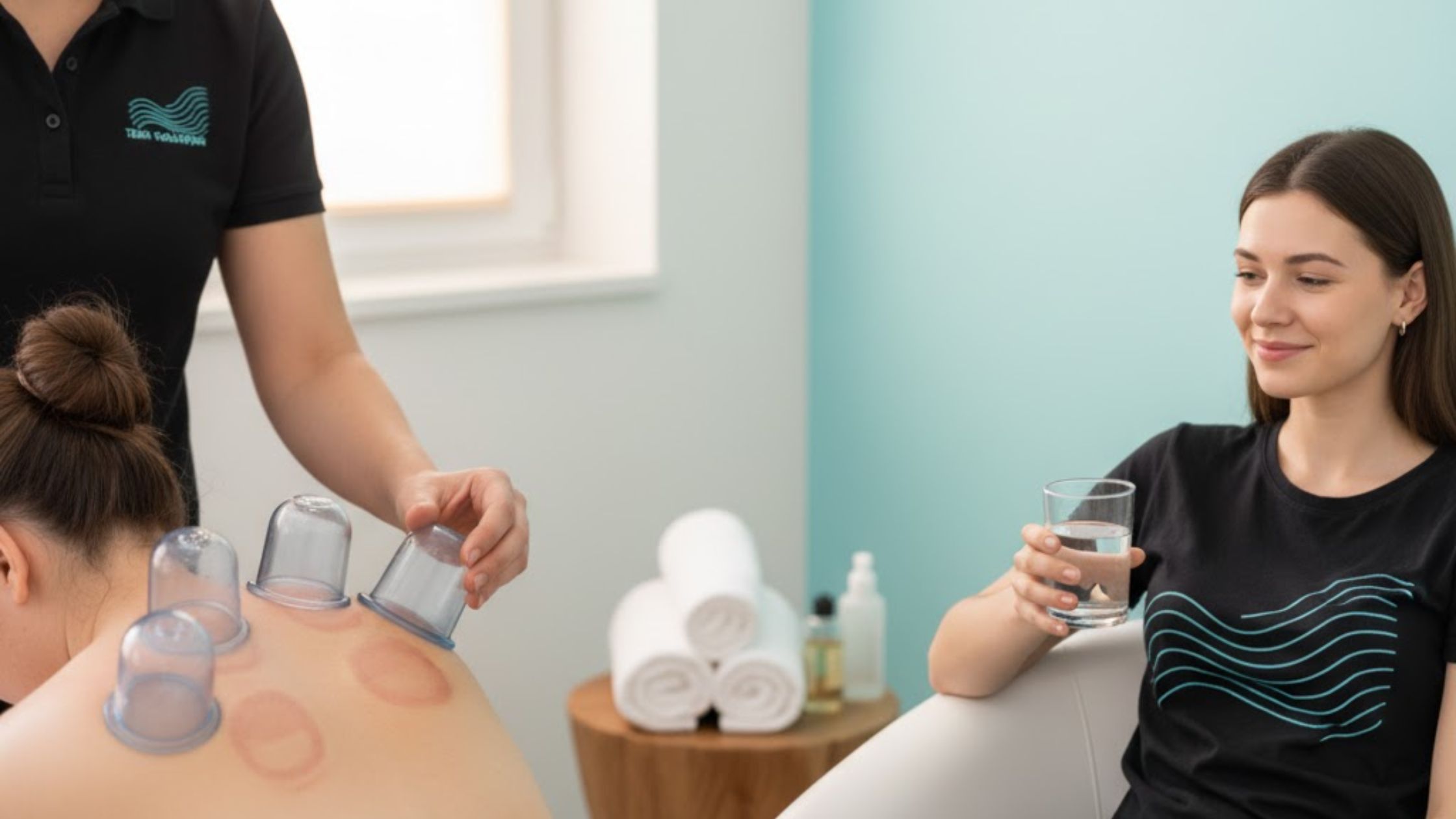
A typical massage cupping session begins with an intake and assessment, followed by targeted cupping using dry, gliding, or static techniques, and ends with aftercare advice; most sessions last between 30 and 60 minutes depending on goals. During treatment you may feel a firm suctioning pressure and localized warmth; discomfort is usually brief and distinct from pain, and therapists adjust intensity accordingly. Aftercare focuses on hydration, gentle movement, and monitoring of cupping marks that typically resolve in days; if marks or symptoms persist, seek follow-up evaluation is recommended.
How to prepare for your first cupping therapy session?
Prepare by wearing comfortable, loose clothing and arriving hydrated; bring a list of current medications and relevant medical history to the intake so your clinician can screen for any contraindications. Avoid applying heavy lotions or oils immediately before the session unless instructed, as some techniques require lubricated skin for gliding cups. Communicating recent injuries, surgeries, or blood-thinning medications during intake helps us tailor suction levels safely. Proper preparation supports a focused assessment and effective, individualized treatment.
What sensations and processes occur during cupping therapy?
During cupping you will feel negative-pressure suction that pulls the skin upward and, in gliding techniques, a massaging movement as cups traverse tissue. Sensations range from mild pulling and warmth to brief tightness at areas of adhesion; therapists check in to distinguish therapeutic discomfort from sharp pain. Your practitioner may combine cups with passive or active movement to reinforce fascial release and assess immediate changes in range of motion. Clear communication during the session ensures comfort and optimizes therapeutic dosing.
What are common aftercare tips and expected cupping marks?
Aftercare typically includes drinking water, performing gentle range-of-motion exercises, and avoiding vigorous heat or heavy exercise for a short period if advised by the clinician. Cupping marks—circular redness—are a normal result of the suction increasing blood flow and usually fade over several days to a week. If marks are accompanied by disproportionate pain, swelling, or signs of infection, seek follow-up; otherwise, gentle movement and hydration help consolidate benefits. These aftercare steps support recovery and prolong session gains.
(Note: Fuel Health & Wellness in Grand Rapids and Grandville offers massage and cupping as part of an integrated manual therapy lineup; scheduling an initial assessment can clarify which cupping technique and session length best match your recovery or performance goals. We structure sessions around intake assessment and tailored treatment plans.)
Why Choose Fuel Health & Wellness for Massage Cupping Therapy in Grand Rapids?
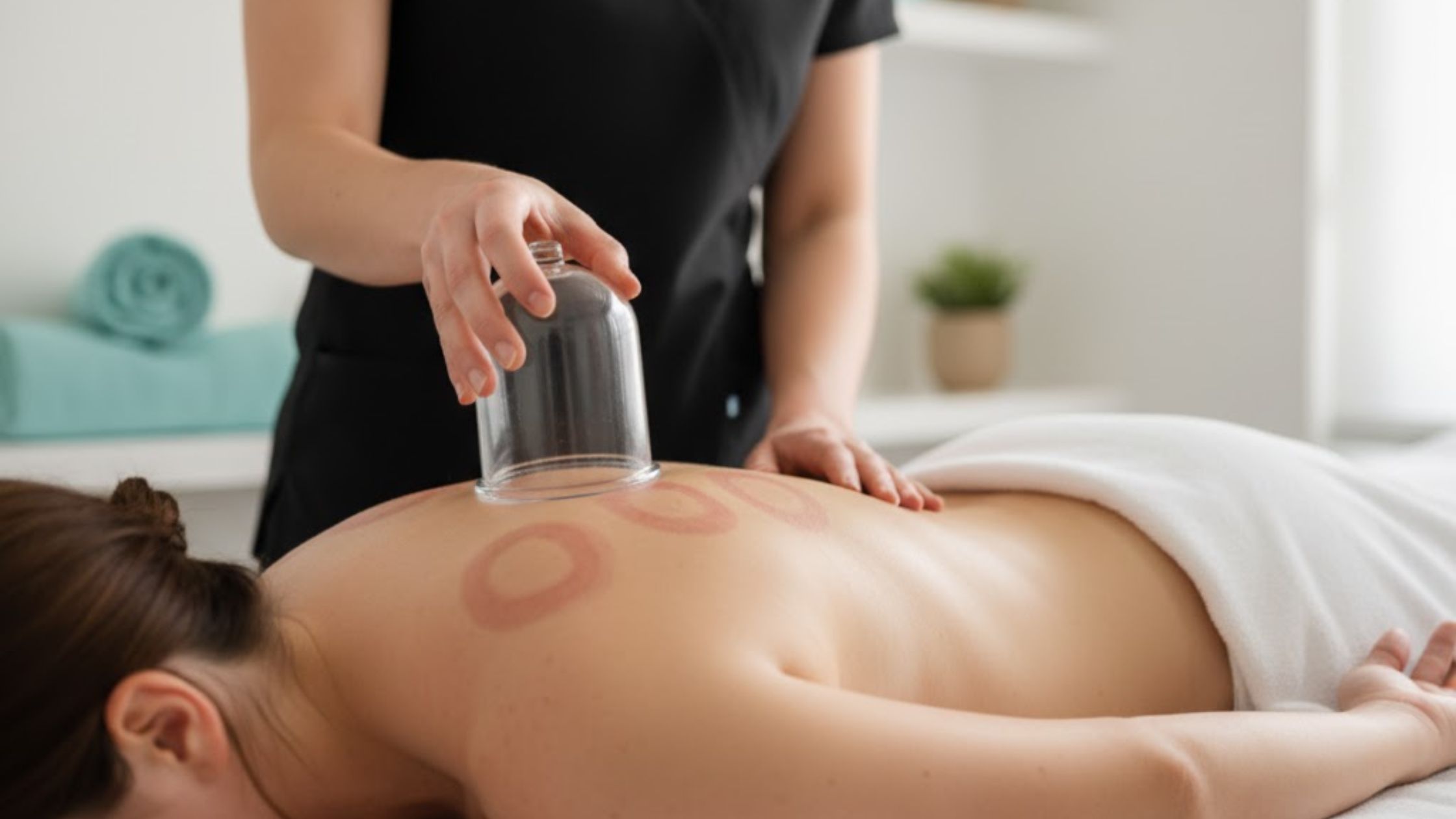
Fuel Health & Wellness provides an integrated, holistic approach to pain relief and mobility that combines manual therapies like massage cupping with assisted stretching, red light therapy, and physical therapy services to support recovery and performance optimization. The clinic emphasizes individualized treatment plans designed to address injury recovery, pain relief, and functional gains, while positioning cupping as one element within a multi-modality strategy. Local clients benefit from a team of board-certified healthcare providers and specialists who apply evidence-informed techniques to produce measurable outcomes and guide follow-up care.
What makes Fuel Health & Wellness’s holistic approach unique?
Fuel Health & Wellness emphasizes combining complementary modalities—massage cupping, assisted stretching, and targeted physical therapy—into cohesive plans tailored to each patient’s biomechanics and goals. This integrative model focuses on both tissue-level changes and neuromuscular retraining to ensure that mobility gains translate into durable function. Our approach frames cupping not as an isolated treatment but as a facilitator of broader rehabilitation or performance programs, which enhances long-term outcomes.
Who are the certified specialists providing cupping therapy?
Our care team consists of board-certified healthcare providers and specialists who deliver manual therapy within an evidence-informed practice model. Our practitioners coordinate across modalities and perform thorough intake assessments to determine safe and effective use of cupping for each individual. Prospective patients are encouraged to review provider bios or request an evaluation to confirm qualifications and determine how cupping fits into a personalized plan.
What patient success stories highlight cupping therapy benefits?
Fuel Health & Wellness highlights measurable results through personalized care pathways that combine cupping with assisted stretching and targeted strengthening for pain reduction and improved range of motion. While individual results vary, we find that integrated plans frequently produce reduced pain and improved function for clients with chronic tension and athletes seeking mobility gains. For those curious about specific case examples or to schedule an an evaluation, the clinic offers consultations to align expectations and design tailored treatment pathways.
(Brief booking note: Fuel Health & Wellness accepts appointments for massage and cupping services at its Grand Rapids and Grandville locations; scheduling an intake allows us to design the appropriate technique and session duration.)
What Are the Most Common Questions About Massage Cupping Therapy in Grand Rapids?
This section answers frequently asked questions about efficacy, safety, contraindications, and recommended frequency so readers can quickly find clear, evidence-informed guidance. Short, direct answers help capture common search intents and help you decide whether to pursue cupping as part of a rehabilitation or wellness plan. Read on for concise responses to typical patient concerns and practical recommendations for scheduling and safety.
How does cupping therapy relieve muscle tension effectively?
Cupping relieves muscle tension by applying negative pressure that lifts and separates fascial layers, increases local blood flow, and stimulates lymphatic clearance—mechanisms that reduce pain signals and improve tissue flexibility. These combined effects lead to decreased tightness, reduced trigger point activity, and improved range of motion in the treated area. In practice, patients often report immediate subjective relief followed by incremental functional gains when cupping is paired with movement.
Is cupping therapy safe and what are the contraindications?
Cupping is generally safe when performed by trained clinicians, but it is contraindicated in cases such as active skin infections, open wounds, unstable fractures, and certain bleeding disorders or when taking systemic anticoagulants without medical clearance. Proper intake screening and medical history disclosure are essential to identify risks and modify technique or avoid treatment when appropriate. If you have underlying medical conditions, discuss them with your provider before scheduling cupping.
How often should I schedule cupping sessions for best results?
Recommended frequency depends on the condition: acute issues often respond to 1–2 sessions per week during the initial phase, whereas chronic conditions may require a short series followed by maintenance sessions every 2–4 weeks. For athletes, cupping can be scheduled strategically around training loads—more frequent during heavy training and less during taper phases. Individual response dictates progression, so we typically adjust intervals based on improvements in pain and function.
Can cupping therapy help with specific conditions like shoulder impingement or tight hamstrings?
Yes—cupping can reduce local restrictions contributing to shoulder stiffness or hamstring tightness and often helps when combined with targeted rehabilitation such as rotator cuff strengthening or hamstring eccentric loading. For shoulder impingement, cupping on posterior and scapular fascial lines may restore mobility that reduces impingement mechanics; for tight hamstrings, cupping followed by assisted stretching can yield measurable increases in extensibility. An integrated plan that addresses strength and motor control alongside cupping produces the best outcomes.
- Common benefits and mechanisms are: fascial decompression, increased circulation, lymphatic stimulation.
- Safety requires practitioner screening and avoidance in certain medical conditions.
- Frequency is individualized: short-term intensive care for acute issues, tapered maintenance for chronic or wellness use.
- The three key takeaways for considering cupping are: it is mechanism-driven, effective as part of integrated care, and requires appropriate screening.
- Practical next steps include scheduling an intake assessment, discussing medical history, and planning combined therapy sessions for lasting results.
- If in Grand Rapids or Grandville, consider an evaluation to determine whether cupping should be paired with assisted stretching or physical therapy for optimal outcomes.
Frequently Asked Questions
What should I expect during my first massage cupping session?
During your first massage cupping session, you can expect an initial intake assessment where your therapist will discuss your medical history and specific concerns. The session typically lasts between 30 to 60 minutes, during which targeted cupping techniques will be applied. You may feel a firm suctioning pressure and localized warmth. It’s important to communicate any discomfort to your therapist, who will adjust the intensity as needed. After the session, you’ll receive aftercare advice to maximize the benefits of the treatment.
How does cupping therapy help with recovery from sports injuries?
Cupping therapy helps with recovery from sports injuries by enhancing blood flow to the affected areas, which promotes healing and reduces inflammation. The suction created by the cups helps to lift the fascia, allowing for better tissue glide and reducing muscle tightness. This can lead to quicker recovery times and improved mobility. Athletes often incorporate cupping into their recovery routines to alleviate soreness and prepare their muscles for subsequent training sessions, making it a valuable tool in sports rehabilitation.
Are there any side effects associated with massage cupping therapy?
While massage cupping therapy is generally safe, some individuals may experience mild side effects such as temporary bruising, redness, or soreness in the treated areas. These marks are a result of increased blood flow and typically fade within a few days. Be sure to discuss any concerns with your therapist, especially if you have sensitive skin or underlying health conditions. Proper technique and practitioner experience can minimize the risk of adverse effects, ensuring a safe and effective treatment experience.
How can I maintain the benefits of cupping therapy after my session?
To maintain the benefits of cupping therapy, we recommend staying hydrated and engaging in gentle movement or stretching after your session. This helps to consolidate the gains achieved during treatment. Incorporating regular physical activity and following any specific exercises or stretches suggested by your therapist can further enhance flexibility and mobility. Additionally, scheduling follow-up sessions as advised can help sustain the therapeutic effects and support ongoing recovery or wellness goals.
Is massage cupping therapy suitable for everyone?
Massage cupping therapy is beneficial for many individuals, including athletes and those with chronic muscle tension. However, it may not be suitable for everyone. People with certain medical conditions, such as skin infections, open wounds, or bleeding disorders, should avoid cupping. We’ll perform a thorough intake assessment with a qualified practitioner who can evaluate your health history and determine if cupping is appropriate for you. Individualized treatment plans ensure safety and effectiveness.
Can cupping therapy be combined with other treatments?
Yes, cupping therapy can be effectively combined with other treatments such as physical therapy, assisted stretching, and massage. This integrative approach enhances overall treatment outcomes by addressing multiple aspects of recovery and wellness. For instance, following cupping with assisted stretching can help reinforce the increased range of motion achieved during the session. Discussing your treatment goals with us will help create a comprehensive plan that maximizes the benefits of each modality.
Conclusion
Massage cupping therapy offers significant benefits, including reduced muscle tension, improved flexibility, and enhanced recovery through its unique suction techniques. By understanding the physiological mechanisms behind cupping, you can make informed decisions about incorporating this therapy into your wellness routines. If you’re in Grand Rapids, consider scheduling a session to experience the transformative effects of massage cupping for yourself. Explore our services today to take the first step towards improved mobility and overall well-being.
